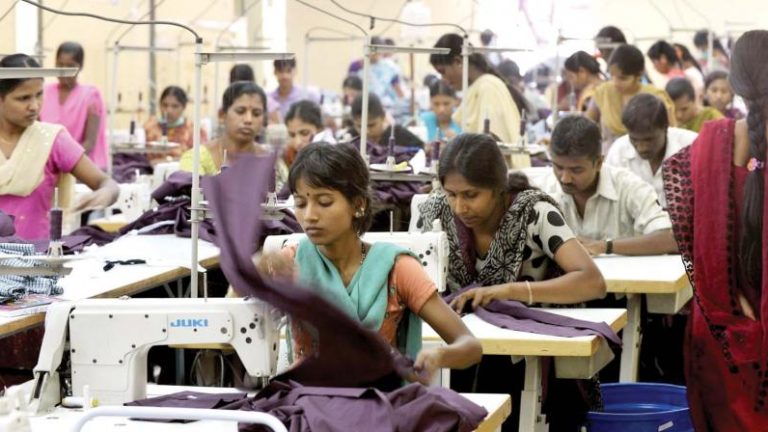National, 8th March, 2022: While the total number of female workers in India is 149.8 million, the labour market participation by them is abysmal states TeamLease Services’ latest analysis-No Women Left Behind. According to the study, only 12% of the women are part of the contractual staff in India as against 88% in men.
A comprehensive analysis, No Women Left Behind brings to light the current state of women participation in the workforce, challenges and strategies to raise the same. According to the study, one of the primary reasons for the low rate of women at work is the high participation in domestic duties or unpaid work. As a supplement to this, Economic Survey, 2018-19 noted that the rate of women engaged in domestic duties is as high as 55.7% in rural areas and 59.1% in urban areas. According to a first-of-its-kind ‘Time Use Survey’ by the Ministry of Statistics and Programme Implementation, GoI, women spend about 5 hours a day on unpaid domestic work or thrice as much time as men. Further, the U-shaped relationship between education and labour force participation, ie, at high levels of education women face fewer constraints from their family to participate in the labour force and at extremely low levels of education and income, women have no option but to join the workforce and support their households. In fact, the U-shaped relationship coupled with lack of demand for moderately educated women are factors driving gender inequality at work. COVID induced job market stagnation has also forced women out of the labour force. Low participation of urban women in the labour force, mobility restrictions and sacrificing of career progression, education opportunities to meet family responsibilities, safety considerations and other social restrictions also are complementing the low presence of women in the workforce.
As per the analysis, the work eco-system in general is also not very conducive nor encouraging to increase women participation. Irrespective of the nature of work, majority of the women employees in India still do not have a written job contract, nearly half of the regular wage/salaried employees are not eligible for paid leave. Similarly a significant proportion of the women who are currently in the workforce do not have access or are not eligible for any social security benefits deterring the participation of women at work.
Elaborating about the findings, Ms. Rituparna Chakraborty, Co-Founder & Executive Vice President, TeamLease Services, said, “One of the biggest causalities that the pandemic has caused is, it has pushed the women participation at workforce to a further lower level. Correcting and improving it will call for an aggressive and comprehensive approach focussed on ensuring women are given equal importance in the country’s economic plan. It will require equal participation by the entire stake holder including women, employers and policy makers. In fact, improving women’s labour force participation and bringing it to the same level as men can not only have a positive impact on women, it can help in boosting GDP by 27%.”
A detailed drill down of the research not only highlights the current state, it also suggests recommendations to improve the rate of participation. The top 10 recommendations are:
- Revamp the labour code or include provisions in the labour code- The new labour codes do not emphasise or lay out a plan to focus on acquiring skills, upskilling training to women. Acquiring skills, upskilling and training not only strengthen women, but also facilitate in formalizing the informal sector women labour force participation. In this direction, the labour code must facilitate and support the women labour force participation. It should work toward ensuring equity of access and opportunity, 50% of placements provided through skill development programmes must be allotted for women.
- Comprehensive gender sensitive tax rebate across financial transactions including income tax, stamp and transfer duties during property transfers etc- The tax exemptions under section 88C marginally benefitted women as only 4% of economically active women are in the formal sector. Hence comprehensive gender sensitive tax rebate across financial transactions including income tax, stamp and transfer duties during property transfers etc. Recently some of the states extended concession in stamp and transfer duties during property transfer to women, similar relaxation to be extended to other states.
- Set up a gender sensitive and gender transformative skill development framework. Redefine the role of National Skill Training Institute to promote gender diversity in the training institutes.
- Offer incentives to MSMEs and make the process of engage female apprentices and employees simple. MSMEs play a major role in the success of this scheme since these enterprises are more accessible to women as their numbers are high and spread across geographies.
- Create gendered friendly policy to minimise the gulf between ownership versus control of land by addressing patriarchal conventions and bottlenecks in interpersonal legislations.
- Enhance public investment in infrastructure for the semi-urban areas, small towns, tier-II and III cities
- Encourage companies to dedicate larger portions of their procurement budgets toward businesses owned by women and also to be partnered with women-owned businesses.
- Unequal access to formal financial services is a major constraint restricting women to start or expand businesses. Generating awareness about products and services, and providing tailored tools to women such as doorstep services, communication support, simplifying approval processes to reduce the number of visits to branches, innovative delivery systems, tie-ups with non-governmental organizations, microfinance institutions, and self-help groups can reduce transaction costs for women and help them manage risk.
- Providing subsidies for women in farming and creating an ecosystem of self-help groups to increase. Special schemes with PPP into Agricultural sector to increase yield will also help the industry to bring from informal family occupation to an industry run business and more participation of women.
























Add comment